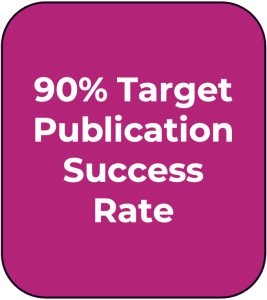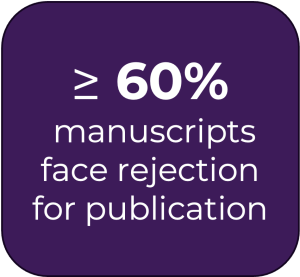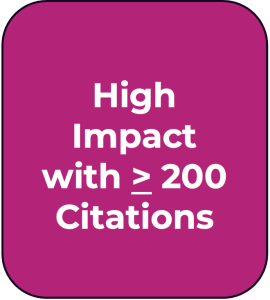How to Maximise Publication Success with Peer-Reviewers
Practical Recommendations with a Focus on Delphi Consensus
About the author
Angela Di Emidio holds a PhD in Dermatovereology and
an MSc in Pharmacology. A Senior Content Lead at Triducive,
she also has experience as a peer reviewer of articles for Interdisciplinary
Health and Social Care Journal.
As more than 60% of manuscripts face rejection for publication (House of Commons 2011; Kalayarasan R & Murugesan C. IJAMHR 2022), this article offers advice that can be beneficial for achieving acceptance in peer-reviewed journals, before outlining the particular case of Delphi consensus.
The peer-review editorial process
Upon submission, a manuscript undergoes an initial evaluation to determine its alignment with the scope of a journal. If the manuscript is considered to be appropriate and of interest to the journal’s readership it will be sent for peer review. At least two peer-reviewers will assess the article content and generate a comprehensive report, which is shared with both the authors and the editor. They may recommend that the editor:
Accept the manuscript for publication
Accept with minor/major changes, affording authors the opportunity to revise and resubmit the manuscript
Upon resubmission, authors are required to include a cover letter detailing point-by-point all the changes made
Informed by the report and recommendations from the peer-reviewers, the editor ultimately decides whether to publish the manuscript or not. The overall editorial process is outlined below (Fig.1).

Several factors can enhance the likelihood of a manuscript being accepted for publication.
Key factors to consider when submitting for peer-review publications
Novelty
The paper must address specific questions that have not been explored before, making it clear how the article contributes to the scientific field.
Journal requirements
Ensuring adherence to requirements of the journal, typically outlined in the “Author Guidelines” section, is crucial. These usually revolve around the presentation of the title page, contributor and guarantor information, patient consent, competing interests declarations, word count and key sections for the article, to name a few.
Manuscript content
The manuscript must meet the publication standards which usually cover the following 4 areas:
Style and structure
- Clear, logical, and understandable writing style for a broader audience
- Appropriate structure including sections that facilitate the retrieval of information, abstract and relevant keywords
- Consistency and coherence throughout the paper
Clarity of purpose and cohesive content
- Clear and concise title, reflecting the study’s aims
- Alignment between objectives, methods employed in the study, and conclusions
- A clear detailing of methods to enable other researchers to replicate the study
- Explanation of statistical analysis within the methods section
- Clear informative visuals, accompanied by titles and legends aiding in content comprehension while avoiding unnecessary visuals
- Appropriate conclusions refraining from exaggeration or misrepresentation of information
Transparency
- Relevant references, preferably not exceeding a 5-year timeframe from the date of publication
- Study limitations honestly considered and/or how any bias has been recognised (and mitigated)
- Any additional useful information included in the supplementary section or appendix
- Adherence to ethical requirements in scientific/medical research
- Reporting of any conflicts of interest
Top tips to follow when submitting a Delphi Consensus study to a peer-review journal
As this is Triducive’s area of particular expertise, we have noticed that Delphi consensus studies are increasingly used to understand and support positive change in healthcare. Here are the tips, based on Angela’s experience, to develop a Delphi consensus manuscript and maximise its chances of achieving target publication:
- Using a recognised EQUATOR standard (e.g. CREDES, SQUIRE, ACCORD) when designing and reporting on a Delphi consensus study helps ensure scientific rigour and relevance for healthcare practice
- Transparency of the particular modified Delphi consensus method used and of the specific steps involved to allow for reproducibility are highly important to consider
- Describing the rationale behind the profile and method of selection of the experts who provide input and responses recognises and manages the main risk of bias for Delphi studies
- Ensuring due focus and relevance are placed on areas of non-consensus is important to consider in developing the discussion
- Any recommendations should be directly attributable to clear areas of consensus, and care should be taken to avoid over-inference from the results generate
Our experience with gaining peer-reviewed publications for Delphi Consensus


Being an expert in facilitating Delphi consensus, Triducive has experience in designing, delivering, and supporting the publication of over 50 Delphi consensus studies and other types of manuscripts in peer-reviewed journals across various therapeutic areas. If you are considering a Delphi Consensus Study, please get in touch – we would love to help!




